Adenomyosis is a challenging uterine disorder (Gynecological Disorder) affecting countless women in India and worldwide. Some of the common symptoms are severe menstrual pain, heavy bleeding, and fertility issues. Conventional treatments include Hormone therapy, Intra Uterine Devices (IUD), Non-steroidal anti-inflammatory drugs (NSAIDs) and Hysterectomy.
All of these treatments come with their own package of side effects like depression, weight gain, bone weakening, insomnia etc. Is there any alternative treatment, without side effects to fix Adenomyosis? Yes, by following an Indian diet plan for Adenomyosis and a healthy lifestyle it can be fixed.
Estrogen dominance is associated with the development and worsening of Adenomyosis. Indian diet plan for adenomyosis will help in balancing the hormones and managing Adenomyosis. Although diet alone cannot cure the condition, its impact on mitigating symptoms and supporting the body’s functions cannot be overlooked. This article will empower women with knowledge about diet’s role in adenomyosis management, individuals can make informed nutritional decisions, complement medical treatments, foster a healthier and more fulfilling life.
How Estrogen Dominance is Linked with Adenomyosis?
Estrogen dominance is a condition where the level of estrogen in the body is relatively higher in comparison to other hormones, particularly progesterone. While estrogen dominance is not a direct cause of adenomyosis, it is believed to be associated with the development and worsening of the condition. The exact cause of adenomyosis is not fully understood, but some theories suggest that estrogen may play a role in triggering or promoting this abnormal growth.
Estrogen dominance may lead to excessive proliferation of the endometrial cells, potentially increasing the likelihood of these cells infiltrating the uterine walls and contributing to adenomyosis. Additionally, estrogen dominance can lead to an imbalance in the menstrual cycle, causing heavy and prolonged periods, which are common symptoms of adenomyosis.
If you think adenomyosis can be fixed by fixing only estrogen dominance, then you are wrong!! You have to balance all of your hormones to manage Adenomyosis – Thyroid hormones, Insulin, Pituitary, etc. This sounds impossible, but it is not that complicated. How? Let’s see!
Indian Diet Plan for Adenomyosis:

Stop chasing after symptoms
If you start running behind symptoms to fix each one of them, it will turn up into an uphill struggle. What cream should be used for skin rash, what pill to be popped to induce sleep, what herb to take for reducing hot flashes, which supplement to reduce hair loss, and how to boost energy? You will end up frustrated and tired if you try to fix individual symptoms of pain or dysfunction. One can easily quit the journey to reset the health midway out of frustration.
Instead, start fixing your foundation – Healing your digestion, support liver and balancing sugar levels.
Let me explain this with an example. Just Imagine your body as a garden or land where you want to grow flowering plants. Major work will go into making nutrient-dense fertile soil required for the plant to grow and bloom. And, when it is done, very little is required to raise a beautiful garden to bloom and thrive.
Similarly, without proper nourishment, your health cannot thrive and fix hormonal imbalances.
PS: Indian Diet Plan for Adenomyosis cannot be used as a replacement for medicines and treatments suggested by healthcare providers. It must be discussed with your healthcare provider and followed along with medications prescribed by them.
Principle of Indian Diet Plan for Adenomyosis: Get the foundation of your health strong
- Restore Gut Health – A healthy gut and good digestion aid in maintaining estrogen levels. Diverse, balanced microbiomes break down estrogen and support the immune system.
- Detox the Liver – A well-functioning liver can prevent estrogen dominance in the body. Detoxing the liver can reduce the toxic levels in the liver and rejuvenate it to perform its function well. Detox liver doesn’t mean you starve on juices or lime water. One must gently detox lover by consuming liver-supporting foods that stimulate bile and bind up estrogen and fibre-rich food.
- Stabilize the blood sugar – In general people with hormonal imbalance will have either too high or too low sugar levels. Most of the time it will be on the higher side. By cutting off simple or refined sugars and taking protein & fibre-rich foods one can control sugar cravings, steady blood sugar levels and reduce inflammation.
Start fixing the above 3 foundations and observe the symptoms getting reduced gradually week after week. You will notice amazing changes in your health and emotional well-being. Certain symptoms, which you would have never thought are due to Adenomyosis will vanish away.
Before looking into the diet plan, I would like to mention three things-
- Get a basic health checkup done, which includes a Thyroid profile, Complete blood count, Vitamin D, Vitamin B12, Calcium, Liver profile, and Kidney profile. Get the reports checked with Doctor. If there are any deficiencies or abnormal blood reports, Doctor can suggest medications to fix them. Integrative Approach, Combining the diet with medical treatments can optimize adenomyosis management.
- Always bank on Seasonal, Local, Organic and whole foods.
- You are your first doctor and dietitian. Being their “first doctor and dietitian” does not mean you should replace medical professionals or trained dietitians. Being your first doctor and dietitian means that You should actively participate in your own health and well-being. It involves taking steps to educate oneself about healthy lifestyle choices, understanding the importance of balanced nutrition, and being mindful of the body and its signal.
The Indian diet plan for Adenomyosis, Phase 1:

Empower Wellness with an Anti-Inflammation and Elimination Diet for Adenomyosis
Chronic inflammation may worsen adenomyosis symptoms and hormonal imbalances. While the anti-inflammatory elimination diet may not cure adenomyosis, it can help individuals to understand better their body’s responses to specific foods and potentially alleviate some discomfort.
- Anti-Inflammatory Diet: Emphasizes nutrient-rich foods like fruits, vegetables, whole grains, and omega-3 fatty acids to reduce inflammation.
- Elimination Diet: Avoid Milk (Dairy), Eggs, Gluten (Wheat, Rye, Barley), Soya, Nuts, and Fish from your diet. I know many of you must be feeling upset by now but do not worry, you have to follow an elimination diet for 28 days only!! Most of the gut-related issues get fixed by the end of this phase.
| Foods to Include in Elimination Diet | Foods to exclude in Elimination Diet |
| Rice, Quinoa, Ragi, Kuttu, Rajgira, Bajra, Jowar and other millets | Gluten containing grain like Wheat, Rye, Barley |
| Lentils, Chickpeas, Mungbeans, Rajma,Chole, Chicken | Soya and soy-based products like Tofu |
| All fresh vegetables | If there are known nut and seed allergies, please avoid them |
| Coconut milk, Almond milk, Rice milk | In few cases, with severe bloating and acidity symptoms, Tomatoes, Brinjal and Bell peppers must be avoided. |
| Indian Herbs and Spices can be used moderately to enhance the flavour of food. Examples: Turmeric, Ginger, Garlic etc. | Dairy products like milk, cheese, yoghurt etc |
| Healthy Fats like Kachi Ghani oil, Sesame oil, Olive oil ,Coconut oil. | Eggs and Fish |
| Nuts (if not allergic) – Almonds & Walnuts | Highly processed foods, Red Meat, Organ Meat, Refined products, Food Colours. |
| Seeds (If not allergic) – Flax Seeds, Garden Cress Seeds, Pumpkin Seeds, Sesame seeds. | Packaged Foods |
- Identifying Triggers: Introduce the foods which you have eliminated in the last 28 days gradually. Gradual reintroduction of eliminated foods helps pinpoint potential dietary triggers. Note down if you experience any of the symptoms after eating a particular food. Symptoms can be Bloating, Nausea, Diarrhea, Constipation, Spotting, Heavy Bleeding, Abdominal Discomfort etc. Add foods which are well tolerated and avoid foods which are triggering symptoms. Avoiding inflammatory foods from the diet will heal the digestive system and reduce inflammation, which is essential for regaining hormonal imbalance and overall well-being.
For example – Flax seeds and Green tea can be beneficial in alleviating symptoms in certain women with adenomyosis but can trigger bleeding in others. So, it’s evident that every individual is different it’s safe to note down the food and triggers you experience in the reintroduction phase.
The Indian Diet Plan for Adenomyosis, Phase 2:
Hormonal Balance Protocol
The table gives a clear idea of the foods to be included and excluded in the Indian diet plan for adenomyosis.
| Fixing the foundation | Food to eat in Indian diet for Adenomyosis | Avoid or remove this food in Indian diet for adenomyosis |
| To restore gut |
|
• Inflammatory foods like high sugar, fat, and salted foods.
• Food allergens Milk, Eggs, Fish, Gluten, Soy • Processed foods • Refined flours like Maida • Conventionally grown vegetables, grains, meat etc |
| To detox liver | • Liver-supporting foods.
• Liver Herbs • Liver Detox drinks . |
• Deep fried foods like namkeen, Pakoras, Bhajiyas, Vada pav, chips, and French fries, Chaats.
• Fatty foods like Pizza, Burger, Shawarmas etc • Red Meat • Alcohol • Coffee |
| To Balance blood sugar | • A protein, Healthy fats and Fiber rich breakfast to curb sugar cravings for the day.
• Millets like Ragi and Jowar • Rajgira and kuttu • Beans • Oats • Portion size • No fasting No feasting |
• Excess sugar
• Alcohol • Refined foods • Ready to eat meal packages • Cakes and Pastries • Carbonated drinks • Packaged foods. • Donuts • Sweets. |
Now let us know how can we include these foods in the Indian Diet plan for Adenomyosis.
Whole Foods:
Foods which are not processed or processed very minimally are called whole foods. It includes –
- Whole grains like Brown Rice, Red Rice, Black Rice, Parboiled Rice, Ragi, Jowar, Whole wheat, Broken wheat or Dalia, Lapsi, Yavva Rava (Local oats rava), Jau, Rajgira (Amaranth), Kuttu (Buckwheat), Sama ke chawal (Barnyard Millet). You can include them in all your meals. You can make upma out of their rava, Instead of regular rotis you can make rotis from kuttu or rajgira, In regular idly dosa batter you can replace white rice with Red rice or Ragi.
- Legumes like Toor dal, Moong dal (green and yellow), Channa, Rajma, Kulith (Horse gram), black eyes bean and all other local dals. You can make dals as a side dish with rotis and rice. You can also make pudla or cheela with them. You can include them in chutneys. You can make papad with dals and include them in your diet.
- Vegetables and fruits which are grown in the organic method of farming. Please do not include vegetables which are grown using pesticides or genetically modified crops. All vegetables and Fruits which are local and seasonal are safe to be consumed in adenomyosis. Have vegetables in Salads, Cold pressed vegetable juice and as a side dish (Boiled/steamed/sauted). Have whole fruit at least once a day. Dry Dates and raisins can also be included in moderation.
- Healthy Fats in moderation:
- a) Cold-pressed oils like kachi ghani oil, Til ka tel, Peanut oil, olive oil etc
- b) Nuts – Almonds, Walnuts,
- c) Seeds – Aliv (Garden cress seeds), Pumpkin seeds, Flax seeds, Sesame seeds.
- Organic produced Chicken and Eggs.
- Milk and dairy are from the organic source where animals are not abused with hormones and medications.
Digestive Bitter Foods:
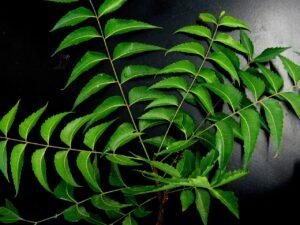
Digestive bitter foods help in bowel regularity and constipation by keep moving the food in the digestive tract. Use them in regular cooking. Some Indian digestive bitter foods :
- a) Methi Dana and Kasuri methi ( Fenugreek seeds and leaves)
- b) Cabbage
- c) Karela (Bitter Gourds), Radish, Papdi (Hyacinth bean), Vaal ( field bean)
- d) Neem leaves.
- e) Lemon Zest and citrus fruits peel.
Probiotics:
Probiotics play a very important role in maintaining Healthy Gut. Include fermented foods and prebiotics to maintain good probiotics in the gut. Include-
- Dahi or Curd
- Greek Yoghurt
- Ambali like Rice kanji, Bajra Raap, Ragi java
- Panta bhaath or fermented rice.
- Idly/Dosa
- Dhokla
- Kefir
- Vegetable pickles (like mixed veg pickles etc)
- Multigrain or whole-grain bread
Liver-supporting foods:
cruciferous vegetables like cabbage, cauliflower, broccoli, beets, leafy vegetables, citrus fruits, garlic, and nuts like walnuts.
Liver-friendly Herbs:
Milk thistle ( Doodh Patra), ginger, cilantro, turmeric.
Liver Detox Drinks:
Fennel seed water, apple cider vinegar, lemon zest water.
10 Nutrients which can amplify the process of healing in adenomyosis:
Incorporating certain nutrients into your diet can potentially fasten the healing process in Adenomyosis and improve overall well-being. Planning your daily menu, try to include these nutrients rich food sources in the meals.
-
B Vitamins
These vitamins are known to balance hormone levels and improve liver function. Specifically, they help to break down and eliminate estrogen in the liver. The following foods are high in Vitamin B complex:
- a) Vitamin B6: This vitamin helps the body to make serotonin, so it may help with anxiety, depression, and irritability. Excess estrogen competes with vitamin B6, so this vitamin may reduce the levels of estradiol in the body. Vitamin B6 Deficiency causes inefficient metabolization of estrogen in the liver. Studies have shown that Vitamin B6 helps to reduce the symptoms of PMS. This vitamin is also involved in the production of taurine which is necessary for liver health. Overall this vitamin helps in reducing PMS, menopause symptoms, Morning sickness, and depression.
Bananas, Beans, Chicken, Eggs, Leafy greens Lentils, Milk, Nuts, Pomegranate, Potatoes, Sweet potatoes, Suran, Arbi, konfal (Purple Yam), Whole grain Cereals, Yoghurt, Salmon, Tuna fish.
- b) Vitamin E: This Vitamin helps the body to reduce levels of prostaglandins. In addition to being an excellent antioxidant, it is a blood thinner, and hormone balancer. Several studies have concluded that Vitamin E helps to reduce PMS symptoms of vaginal atrophy and help to reduce breast pain.
Almonds, Blueberries, olives, Spinach, Sunflower seeds, Coconut Oil.
-
Cruciferous Vegetables
These vegetables contain a substance called indole -3-carbinal (13C) which is known to help detoxify the liver.13C also helps the body to inactivate estradiol and balance hormone levels. WebMD (2016) reports it is “possibly effective” against cervical dysplasia. However, 13C is known to interact with certain medications, so it is crucial to speak to your physician if you take prescribed medicines. Avoid excessive consumption during pregnancy.
Cabbage, Cauliflower, Watercress, Turnip, Broccoli, Bokchoy, Brussels sprouts, Mustard greens, Radish etc.
-
Mushroom
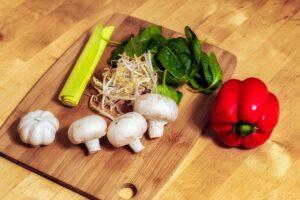
Mushrooms interfere with the production of aromatase which in turn can lower estrogen levels. Shitake and portobello are best to use for this purpose.
-
Fiber
This nutrient helps to rid the body of excess estrogen by regulating bowel function. By feeding the normal flora in the gastrointestinal tract, fiber helps to metabolize hormones. Fiber also binds to estrogen and helps eliminate it from the body. An intake of at least 15 grams should be the goal. The following list contains foods high in fiber.
- Fruits especially Prunes, raisins, pears and raspberries.
- Nuts especially Walnuts, almonds, pecans, and peanuts.
- Legumes especially split peas, navy beans, kidney beans, and pinto beans.
- Whole grains especially like shredded wheat, and oatmeal.
- Fresh vegetables especially artichokes, squash, turnip greens, soybeans, rye
- Seeds like Aliv, chia, pumpkin, and sunflower.
5. Sulphur Foods:
Foods high in sulphur help to keep the liver functioning properly so it can rid the body of excess estrogen. Bananas, Chicken, Coconut, egg yolks, fish, Garlic, Leaks, Pineapple, onions, Watermelon.
6. Magnesium
Foods high in magnesium may help increase progesterone production. Magnesium may help with bloating, anxiety, insomnia, and breast pain.
Almonds, Black beans, Kidney beans, Sesame seeds, sunflower seeds, peanuts, pumpkin, millet.
-
Zinc
This nutrient supports the breakdown and elimination of estrogen by helping to improve liver function.
Baked beans, cashew, zinc, Dark chocolates, pumpkin seeds, sunflower seeds.
-
Omega 3 fatty seeds
These nutrients help the body to balance hormone levels and reduce inflammation. An imbalance of omega 3 to omega 6 fatty acids in the diet is a factor in estrogen dominance.
Flaxseed, Aliv (Garden cress seeds), Sabja, Chia, Gond, Walnuts, Olive oil etc.
-
Resveratrol
This compound contains proanthocyanidins which help to block the production of estrogen. Red grapes and peanuts are good sources.
-
Taurine
An essential amino acid, this substance promotes bile circulation and acts as a diuretic. Since it contains sulfur, taurine aids liver health and toxin removal from the body. Estradiol decreases the amount of taurine formed in the liver, so those with estrogen dominance should ensure that they eat plenty of food that is high in taurine amino acid. Avoid taurine use in cases of bipolar disorder since taurine is known to interact with lithium.
Food sources include –
Fish, Seafood, cheese, Yoghurt, eggs, brewer’s yeast.
Sample Indian Diet Plan 1 for Adenomyosis
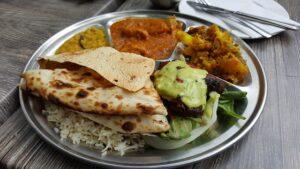
| Morning on wake up (7 AM) | 1 glass (150ml)of cumin water (warm) + 1 teaspoon of pumpkin seeds (dry roast)
Or 1 teaspoon methi dana (overnight soaked in 200 ml water) Chew the soaked seeds and consume the water + 6 overnight soaked almonds and 2 walnuts. |
| Breakfast (8:30 AM) | Green Moong Cheela with Green Chutney (2)/ Paneer Paratha with curd (1)/ Vegetable Dalia / Ragi Dosa with tomato chutney (2/ Vegetable Poha/ 2 multigrain toast with 2 egg whites omelette. |
| Midmorning 9:30 AM | Vegetable Juice/Buttermilk/ Green Tea/ Whole fruit/Coconut water |
| Lunch (12 AM) | One bowl of fresh salad, Dal, sabji with 2 phulkas (whole wheat/millet/Kuttu) along with curd.
Or One bowl of fresh salad with vegetable Brown rice Pulao, Green leafy dal and curd. |
| Evening (4 AM) | A whole fruit/ Murmura Bhel/ Roasted Chivda/ Boiled sprouts/ Greek Yoghurt/ Home-made khakhra/ Peanut chikki /sesame chikki/boiled peanuts/ roasted kala chana/Rajgira Ladduan |
| Late evening (6AM) | Soup ( Vegetable or chicken) |
| Dinner (7AM) | Salad and Khichdi (mix veg / Palak)
Or Salad, Paneer bhurji, 1 multigrain phulka Or Salad, Chicken curry with 1 Phulka |
| Late night (9 AM) | A cup of warm milk with turmeric/ A cup of ginger water/ A cup of chamomile tea. |
PS: The above table mentions a general Indian diet plan for Adenomyosis There can be other health issues along with Adenomyosis like Thyroid, Diabetes, Obesity etc. A registered dietitian or qualified nutritionist can make a personalised diet plan depending on the specific needs and goals.
Biggest challenge in following an Indian diet plan for Adenomyosis?
Very easily said than done!! Learning about the Indian diet plan for Adenomyosis is very easy to know but very difficult to follow consistently. One of the biggest challenges in following an Indian diet plan for Adenomyosis is CRAVINGS. There is a constant urge to eat sugary and deep-fried food due to hormonal imbalances. How to control cravings?? Controlling cravings in estrogen dominance within an Indian diet can be achieved through specific dietary choices and lifestyle adjustments. Here are some tips to help manage cravings:
- Balanced Meals: Focus on balanced meals that include a combination of protein, healthy fats, and complex carbohydrates. Traditional Indian meals often consist of chicken/egg/fish or dal (lentils), vegetables, roti or rice, and curd, which provides a good balance of nutrients.
- Protein-Rich Foods: Include protein-rich foods like lentils, chickpeas, paneer (cottage cheese), and low-fat curd, chicken, and eggs. Protein can help increase satiety and reduce cravings.
- Healthy Fats: Use cooking oils like kachi ghani , sesame oil, olive oil or coconut oil, and include sources of healthy fats like nuts, seeds, and avocados in your diet. These fats can help stabilize blood sugar levels and curb cravings.
- Fibrous Foods: Emphasize fibre-rich foods such as vegetables, whole grains, and fruits like apples, guava, and pears. Fiber aids digestion and helps control appetite.
- Spices: Use spices like cinnamon, turmeric, and fenugreek in your meals. These spices may help balance hormones and reduce cravings.
- Limit Sugar and Processed Foods: Reduce the intake of sugary snacks, desserts, and processed foods, as they can disrupt hormone balance and lead to more cravings.
- Stay Hydrated: Drink plenty of water throughout the day to stay hydrated and avoid mistaking thirst for hunger or cravings. 3 litres of water per day is recommended.
- Mindful Eating: Practice mindful eating by paying attention to hunger cues and eating slowly to prevent overeating. Avoid mobile and television while eating.
- Manage Stress: High-stress levels can exacerbate cravings. Engage in stress-reducing practices like yoga, meditation, or deep breathing exercises. Have a sleep routine of a minimum of 7 hours of sleep during the night.
- Regular Exercise: Incorporate regular physical activity into your routine to help regulate hormones and reduce cravings. Though it’s very difficult to make your body ready for a workout in adenomyosis due to extreme weakness and discomfort, try to take a walk or swim. Once you start feeling a little better try to do yoga for wellbeing. Asanas where your lower body is raised against your body will help in good blood circulation to the uterus like the Hip ridge pose, Sarva anga asan (with wall support) etc. Speak with a certified and experienced Yoga instructor about your health condition to get proper guidance. More fat cells in the abdominal area can produce more estrogen leading to hormonal imbalance. So, it is necessary to have a moderately active schedule for overall well-being. Based on your fitness level, you can start a workout regime under the guidance of fitness experts.
- Seek Professional Guidance: If cravings persist or are significantly affecting your well-being, consider consulting a registered dietitian or healthcare professional with expertise in hormone imbalances and nutrition.
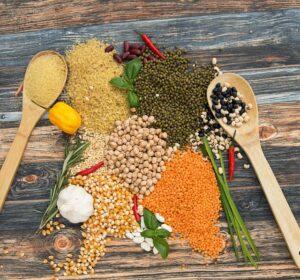
Ayurveda Diet for Adenomyosis: Nurturing Balance and Well-Being
While there is no specific Ayurvedic diet exclusively for adenomyosis, Ayurvedic principles can be applied to support overall health and manage symptoms associated with this condition. It’s important to remember that Ayurveda is a complementary approach and should not replace conventional medical treatments
Here are some dietary guidelines that can be beneficial for individuals with adenomyosis:
- Pacifying Pitta Dosha: Ayurveda recognizes three doshas (energetic forces) – Vata, Pitta, and Kapha – each representing different aspects of our physiology. Adenomyosis is often associated with imbalances in the Pitta dosha. To pacify Pitta, it is recommended to consume cooling and calming foods like sweet & juicy fruits, leafy greens, and cooling herbs like coriander and fennel.
- Favoring Nourishing Foods: Ayurveda encourages warm and nourishing foods that are easy to digest, such as cooked vegetables, soups, and stews. These foods support the body’s energy and enhance digestion, allowing the body to receive essential nutrients.
- Herbal Support: Ayurvedic herbs can be beneficial for managing inflammation and reducing pain associated with adenomyosis. Turmeric, known for its anti-inflammatory properties, can be included in the diet or consumed as golden milk.
- Mindful Eating: Ayurveda emphasizes the importance of mindful eating, encouraging individuals to savour their meals in a calm and relaxed environment. This aids proper digestion and assimilation of nutrients.
- Avoiding Cold and Raw Foods: Ayurveda advises against consuming cold and raw foods, as they can dampen the digestive fire and hinder proper digestion. Warm, cooked foods are preferred to support optimal digestion.
- Hydration: Adequate hydration is essential in Ayurveda. Drinking warm water or herbal teas throughout the day helps to maintain balanced hydration and supports overall well-being.
- Personalized Approach: Ayurveda recognizes that each individual is unique and encourages a personalized diet based on their dosha constitution and current imbalances. Working with an experienced Ayurvedic practitioner can provide tailored dietary recommendations.
Think beyond Diet
Avoid all kitchen, beauty and home products having xenoestrogens. Xenoestrogens are chemicals that have estrogen-like activity in the human body. They are dangerous because they can alter the functions of hormones, leading to an array of reproductive health issues in Women. We can’t avoid them completely but can reduce their usage as much as possible. We must avoid the products labelled with Xenoestrogens. Some are:
- a) 4-methyl benzylidene camphor (4-MBC) – present in sunscreen lotion.
- b) Alkyl phenols – present in detergents, lubricants and room fresheners.
- c) Atrazine – It is a herbicide used on corn and sugarcane to control weed growth.
- d) Benzophenone – Used in the paint industry, perfumes and sunscreens.
- e) Bisphenol A (BPA) – Used to make plastic resins, CDs, DVDs, Food cans, and Beverage tins.
- f) Butylated Hydroxyanisole (BHA) – Used as a food preservative.
- g) Dichlorobenzene – Used as a Disinfectant and in deodorant manufacturing.
- h) Erythrosine (FD&C Red#3). – Food colouring agent.
- i) DDT, Dieldrin, Endosulfan, and Hepatochlor – present in Insecticides.
- j) Monosodium Glutamate (also called Ajinomotto/ tasting salt) – present in Maggie, Ketchups, Sauces etc.

How long will it take to recover from Adenomyosis?
It depends on the current state of health, how committed you follow the diet and how well you manage your stress/sleep etc. Overall one should feel better in a month but fixing the whole Adenomyosis might take 6 months to 2 years and sometimes even more.
How to keep going?
- Stop having rigid goals like reducing 20 kilos in 3 months. Every small change matters, do what you can. Nourish your body with the correct food & follow a healthy lifestyle, and you will lose weight gradually in a healthy way.
- Ask for family support in this journey. Explain why it’s important for your well-being.
- Cultivate positive thoughts and maintain a positive affirmation journal.
- Move away from Toxic people and Toxic Relationships. Setting up boundaries for your mental health isn’t selfish or rude. Take a stand for your own health both physical and mental.
- You are worth the time. Do little by little, no need to do it all at once.
- Your health deserves the effort. Use organisational tools to assist you; smartphones and watches have tons of this.
- You don’t have to be a Gourmet chef. Learn healthy, simple and homemade recipes from your mother, elders and grandmothers. Bring the old Indian cooking practices and recipes at home to bring back your health.
- Consider therapy with a Psychologist to address any trauma/ feeling of unworthiness/depression or self-sabotaging feelings preventing you from reaching the goal.
Summary
The Indian diet plan for adenomyosis and estrogen dominance offers a non-surgical approach to manage symptoms and restore hormonal balance. Emphasizing anti-inflammatory foods like fruits, vegetables, and whole grains can help reduce inflammation associated with adenomyosis, alleviating pain and discomfort. Including sources of omega-3 fatty acids from flaxseeds and fatty fish supports hormonal regulation and may mitigate estrogen dominance.
Cruciferous vegetables aid in estrogen metabolism, potentially promoting hormonal balance. The diet plan may limit dairy and gluten intake to alleviate potential sensitivities and further support well-being. Nutrient-rich nuts, seeds, and legumes provide essential vitamins and minerals that aid overall health. By avoiding processed and sugary foods, blood sugar levels can stabilize, minimizing hormonal fluctuations.
Under the guidance of healthcare professionals, this personalized diet plan empowers individuals to manage adenomyosis and estrogen dominance effectively, without the need for surgical intervention. Remember that making sustainable lifestyle changes is key to long-term success in managing hormonal imbalances and promoting overall health.
References :
- https://www.sciencedirect.com/science/article/abs/pii/S0301211502003056
- https://www.ncbi.nlm.nih.gov/pmc/articles/PMC5998357/
- https://www.sciencedirect.com/science/article/abs/pii/S0006291X22010609#!
- https://pubmed.ncbi.nlm.nih.gov/25394658/
- https://www.ncbi.nlm.nih.gov/pmc/articles/PMC3976750/
- https://pubmed.ncbi.nlm.nih.gov/33509179/
- https://pubmed.ncbi.nlm.nih.gov/11739882/
- https://www.ncbi.nlm.nih.gov/pmc/articles/PMC2744625/
- https://www.researchgate.net/publication/327096285_Effects_of_lepidium_sativum_garden_cress_seed_on_plasma_luteinizing_hormone_and_reproductive_performance_in_female_rabbits
- https://www.sciencedirect.com/science/article/pii/S0149763420305248

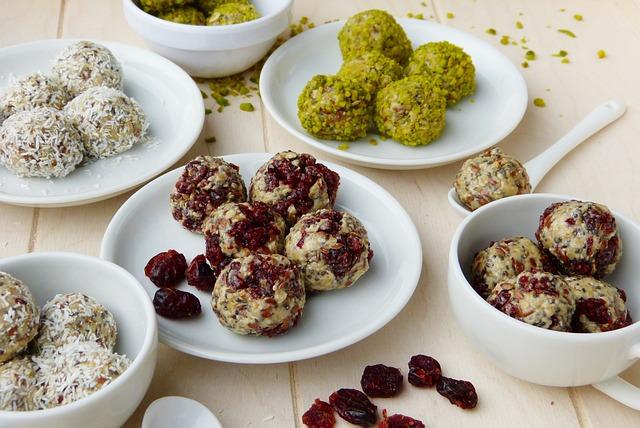
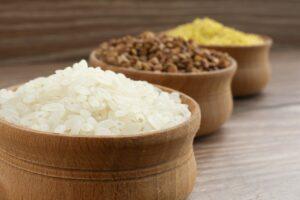
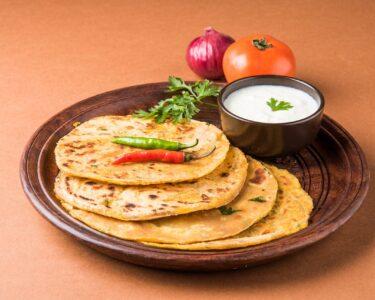
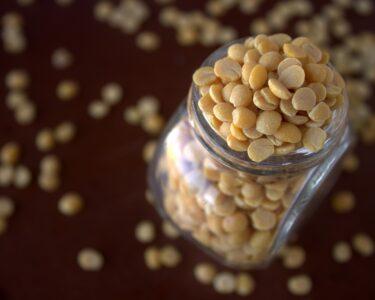

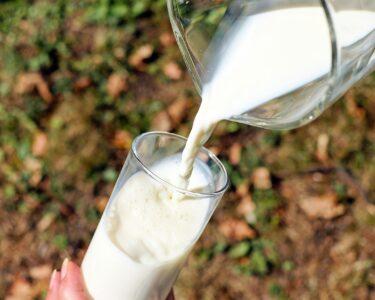
2 Comments